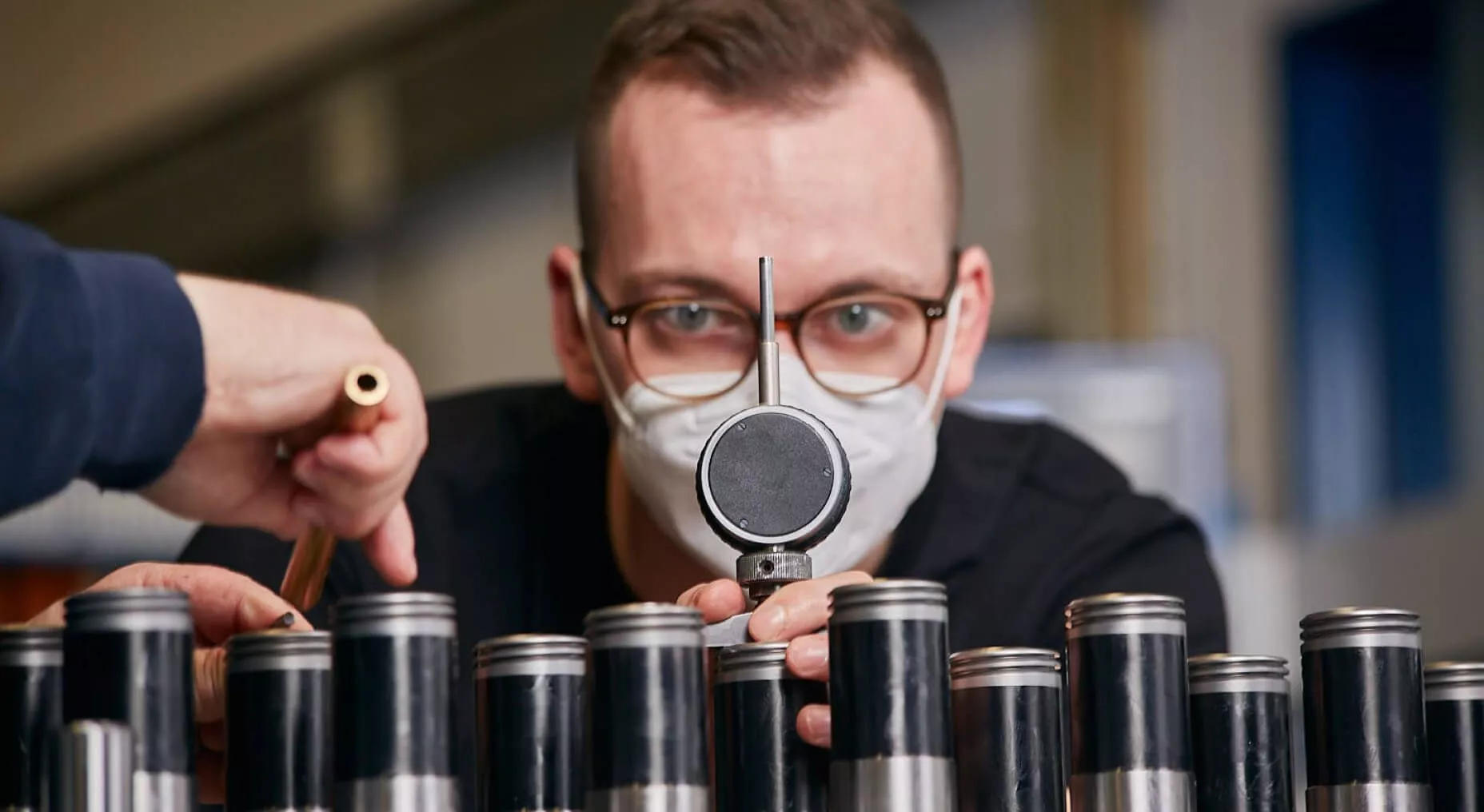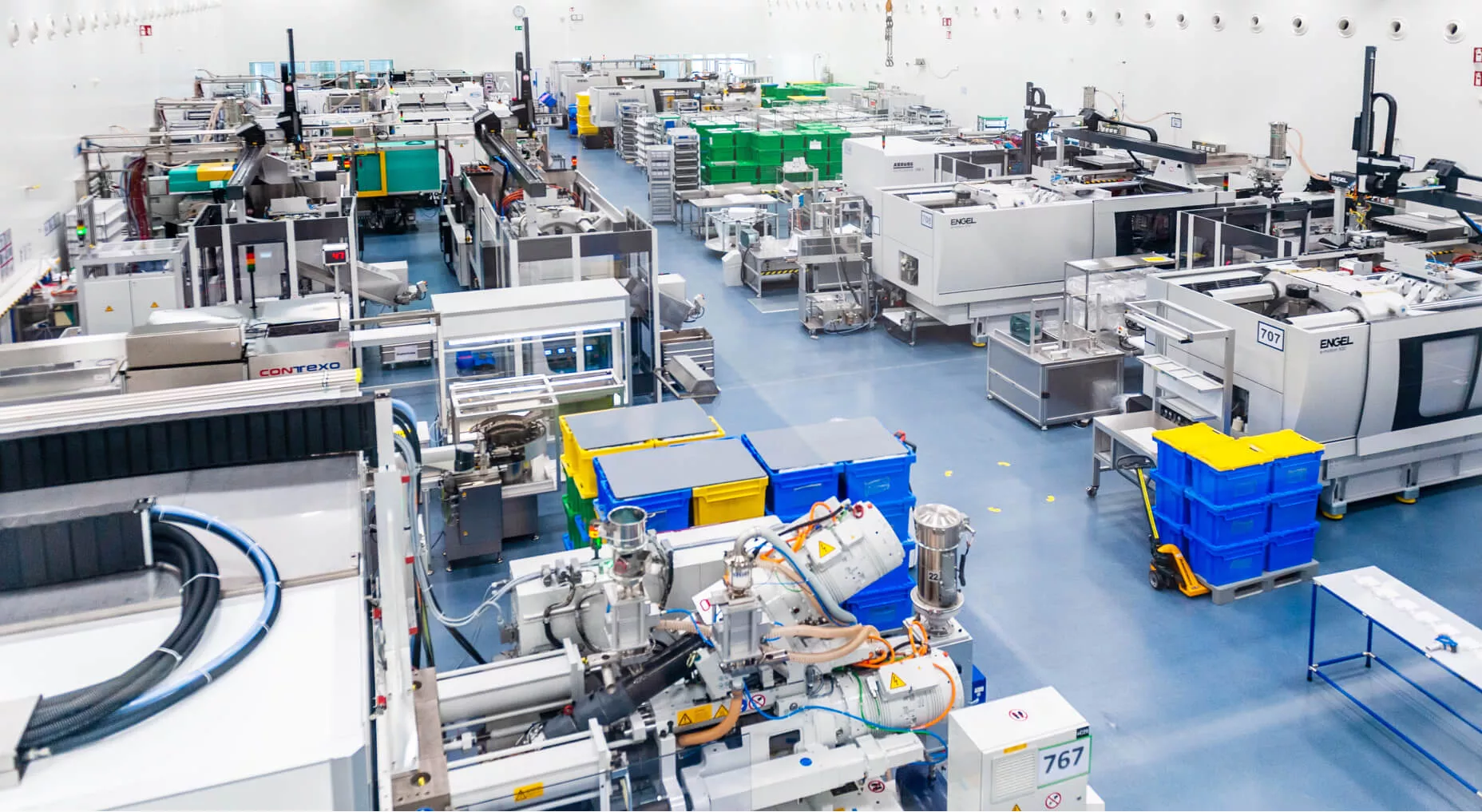
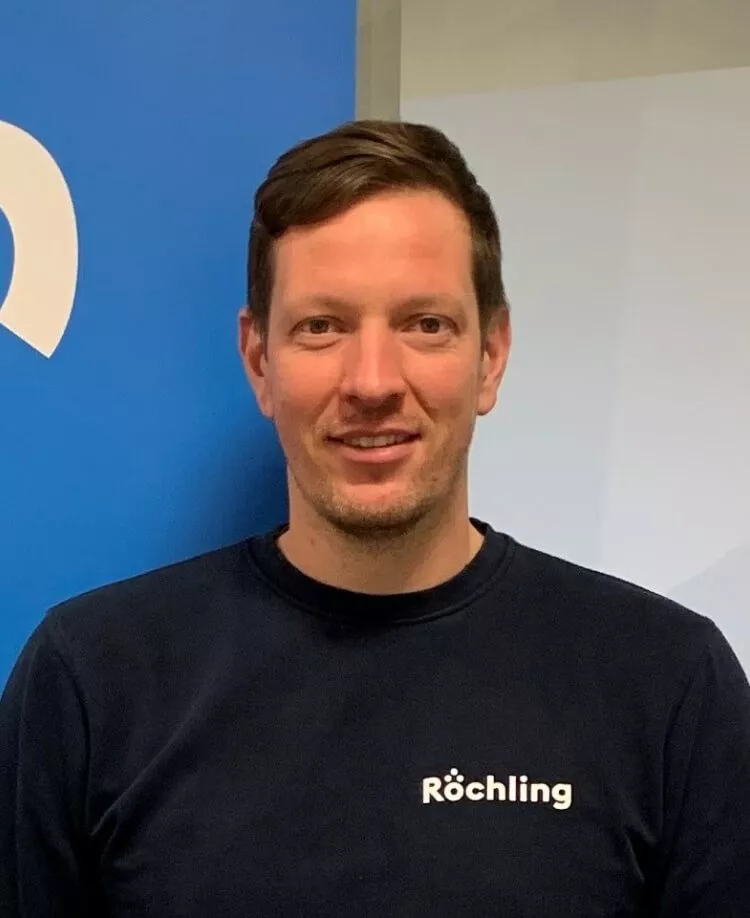
The decisive factor was the overall package
“We chose Servomold because they simply provide us with the total package: The expertise for the industry and the mold, the short lines of communication, but also the digital control unit that allows us to optimally monitor the dewinding process.” reveals Christopher Heyd, head of the toolmaking department at Röchling in Brensbach. The company has already been manufacturing plastic products from various industries for around 200 years - one of them: closure caps for medical containers, which have to be produced under strict cleanroom conditions. Röchling Medical Brensbach GmbH commissioned our team of servo experts to design the appropriate automated unscrewing unit for their new injection molding tool.
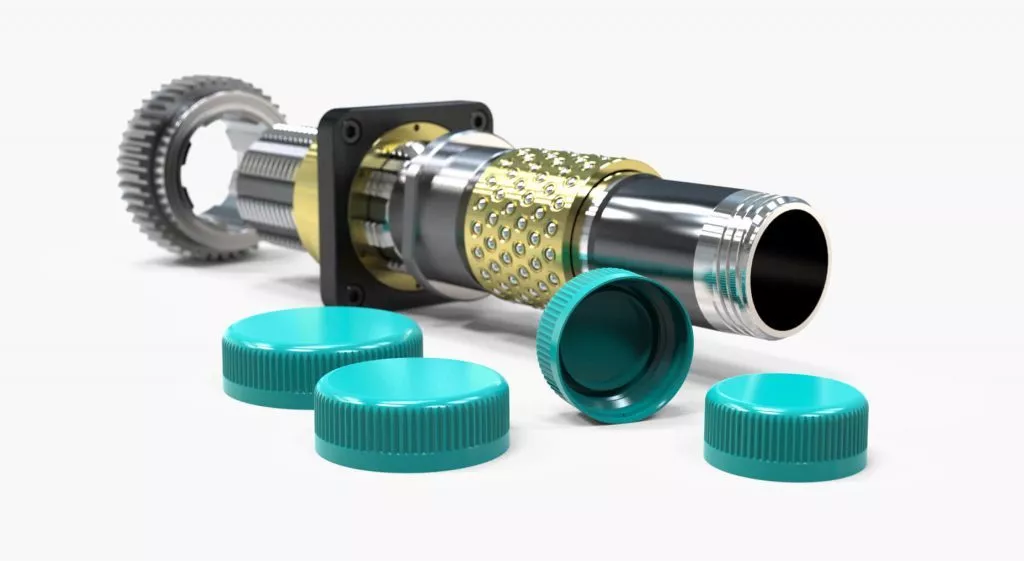
Servo technology makes the difference in the clean room
Drugs, infusion solutions, liquids for curing pain - the production of lids for medical containers is subject to strict regulations, and any contamination renders entire batches unusable.
“Servo technology offers the advantage that, unlike a classic hydraulic system, it does not require lubricants.” knows Christian Etzel, a design engineer in our team for over five years. “Even where oils are required, we use food-grade lubricants so that no contamination can take place that would damage the end product."
Despite this grease-free cleanliness, the systems run with minimal friction. The key to this low-maintenance operation lies in a patent that Managing Director Thomas Meister developed years ago.
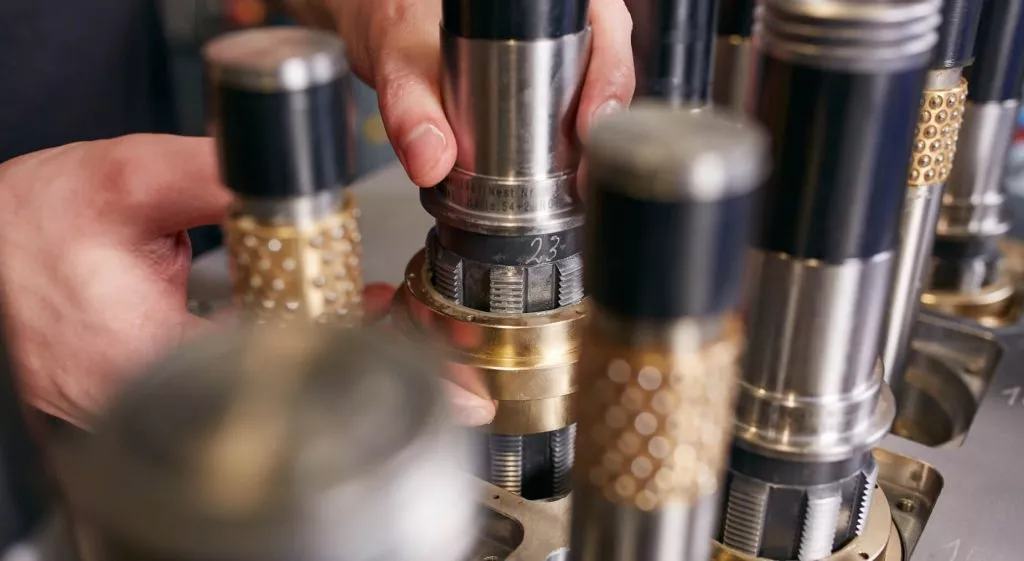
In the patented system, the drive train is separate from the threaded core. This avoids drive influences on the threaded core and significantly simplifies component assembly and maintenance. Radial forces of the drive train are absorbed by thin-section bearings and thus have no influence on the threaded core - this moves back and forth free of radial forces, driven by a splined shaft profile and optimally guided concentrically by a brass guide nut through preloaded ball cages. This design can not only minimize wear and extend service life, but also significantly increases process efficiency and reliability.
Project overview
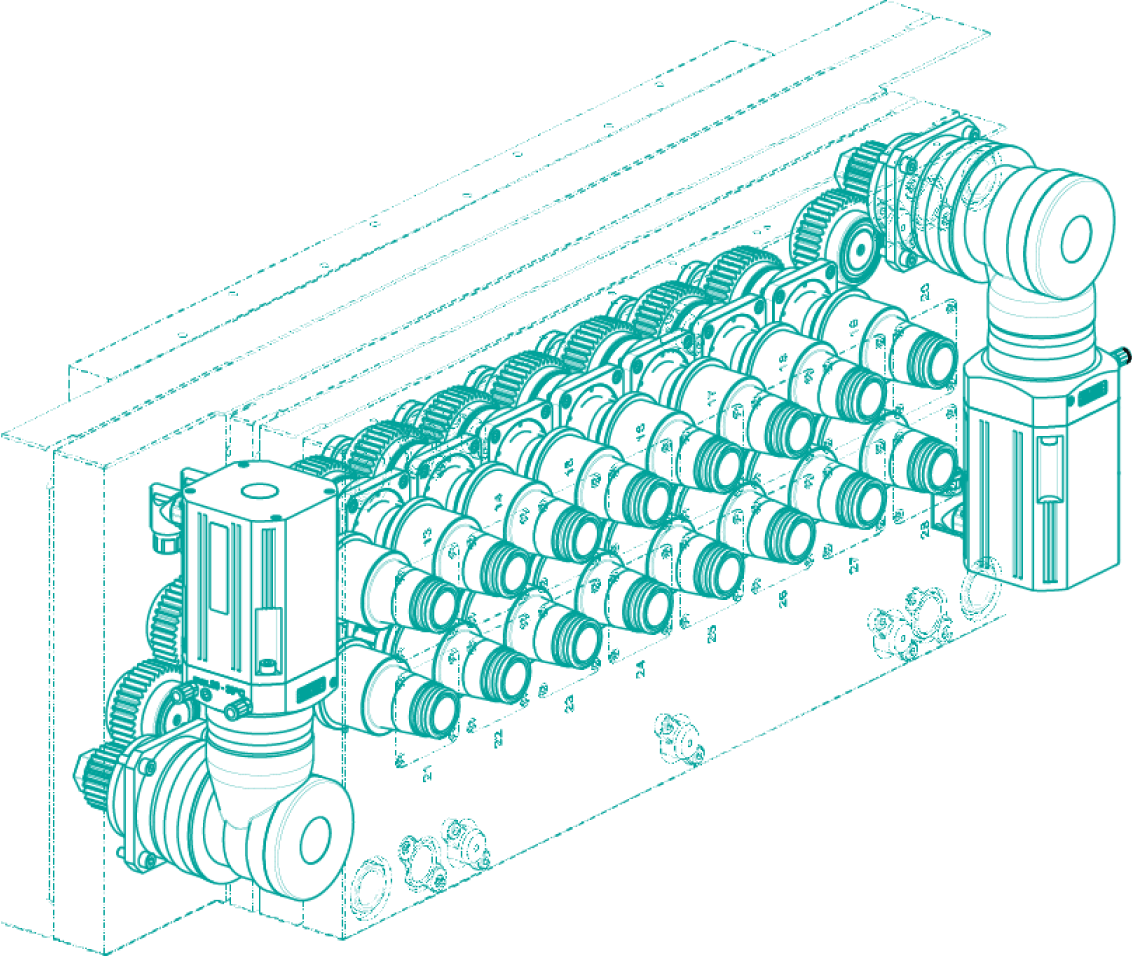
Every mu is worth it
Project manager Christian Etzel likes to take the lowest possible wear through maximum precision to the extreme. After all, the medical field requires precision work with very tight tolerances, especially in the sealing area. All individual parts must be concentric with each other and thus perfectly axially aligned. For Christian Etzel, precisely this challenge is an incentive.
“We work here every day in the third decimal place of the millimeter - these are dimensions that you can hardly imagine. You can wipe that away with my finger, the 5 mu are virtually non-existent with the eye.” explains Christian Etzel with a palpable fascination for what today's technology makes possible. Nevertheless, technological enthusiasm is not a pure end in itself. “Our team is always at the forefront of technological developments. We also work with 3D printers and laser technology. Progress really comes into our daily work and we can pass on real benefits in terms of efficiency, safety and control to our customers as a result.”
Everything under control every second
The specially developed unscrewing unit works reliably with the injection mold in the Röchling production facility day after day and with particularly short cycle times. The control unit supplied by Servomold ensures that the mold continues to run so tirelessly for as long as possible.
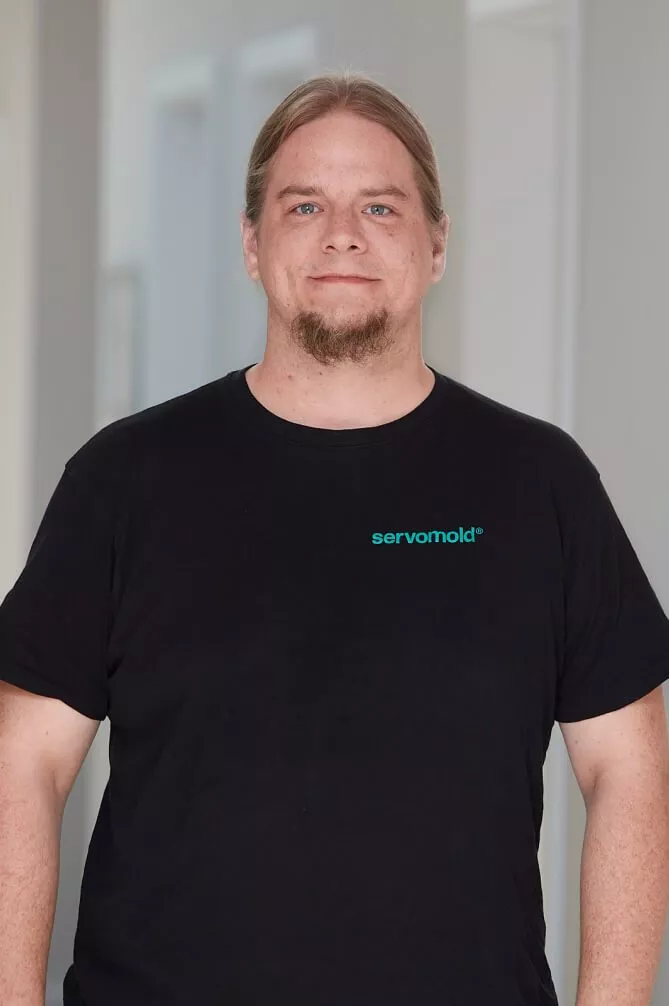
Our systems enable precise adjustment of the demolding movement. This allows us to optimally adapt it to the properties of different plastics and the requirements of the mold and injection molding process.
Christian Etzel –
Project Manager Servomold
In the past, problems caused by deposits or wear would only have been noticed when the components failed or when the tool was dismantled during maintenance work. Today, Christopher Heyd simply monitors the torques during un-spindle operation via the control's display. The servo control limits the torque to the previously defined limits and stops the process as soon as this is exceeded. Heyd can thus operate predictive maintenance and effectively prevent downtime. „As always, it is the overall package, from precision to control, that we appreciate here and that enables us to work pleasantly with foresight.“
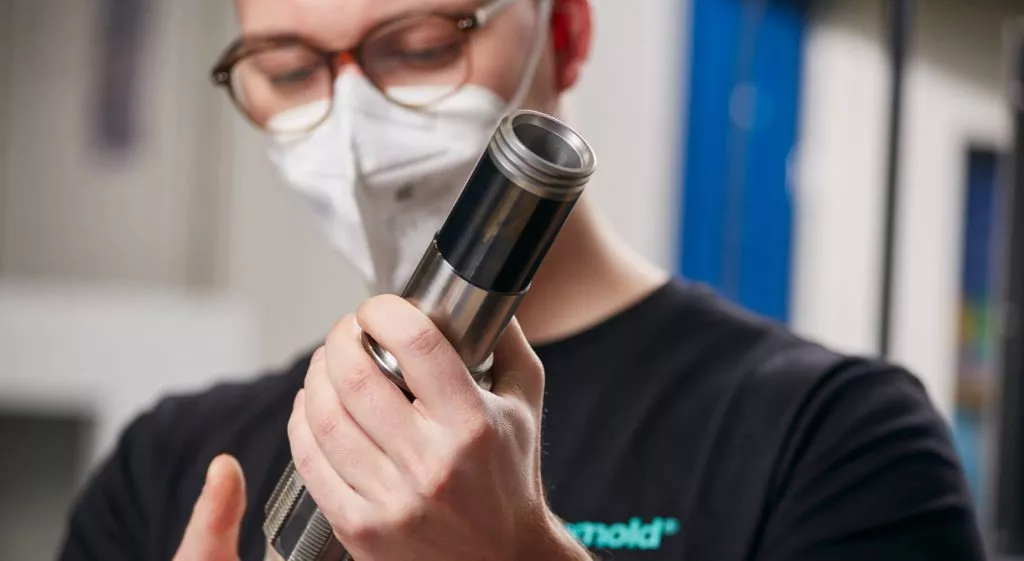
Instead of friction: A good connection
Both sides also describe their cooperation as smooth. They meet at eye level, tackle problems quickly and straightforwardly, and can exchange ideas optimally, also because of the short distances between them. “If we ever have a problem, one of Servomold gets in the car and rides with us here.” Christopher Heyd comments.
This dedication to the cause not only saves valuable time for manufacturers, but also shows that technological applications are also significantly shaped by good people-to-people connections.
Project Manager Servomold
